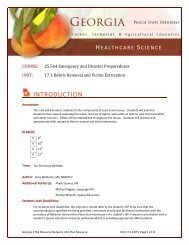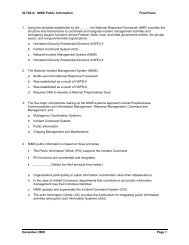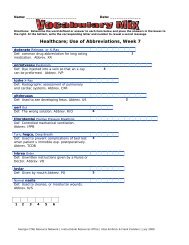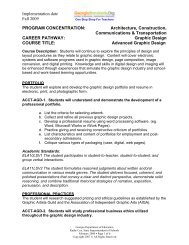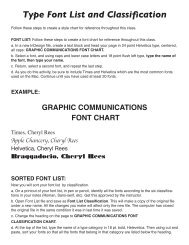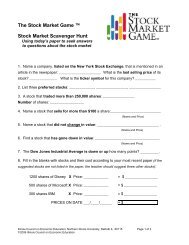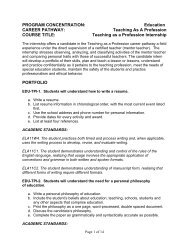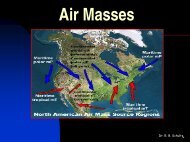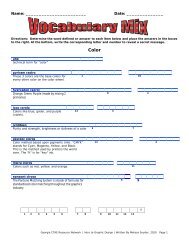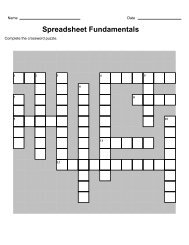emt-basic curriculum module 4
emt-basic curriculum module 4
emt-basic curriculum module 4
Create successful ePaper yourself
Turn your PDF publications into a flip-book with our unique Google optimized e-Paper software.
State of WisconsinPrimary Instructor:Assistant Instructor:EMT-Basic: A Practice BasedApproach to EMS EducationPERSONNELOne Advanced-Level Provider or EMT-Basic instructorwho is knowledgeable in respiratory diseases andhandheld inhalers.The instructor-to-student ratio should be 1:6 forpsychomotor skill practice. Individuals used as assistantinstructors should be knowledgeable in respiratoryemergencies.PRESENTATIONDeclarative (What)I. AnatomyA. Respiratory1. Nasal cavity (humidify, filter and warm) and oral cavity (airpassage)2. Pharynx - air passagea) Nasopharynxb) Oroopharynx3. Epiglottis - a leaf-shaped structure that prevents food and liquidfrom entering the trachea during swallowing4. Trachea – air passage5. Larynxa) Thyroid cartilage – cartilage forming the upper portion ofthe larynx, providing protection for vocal cordsb) Cricoid cartilage - cartilage ring forming the lower portionof the larynx6. Bronchi, right and left main stem - two major branches of thetrachea, passing air into the lungs7. Bronchioles - subdivisions of the bronchi, responsible forcontinued air passage8. Alveoli – single celled structures within the lung where gasexchange occurs9. Diaphragm and intercostals musclesa) Inhalation (active phase)(1) Diaphragm and intercostal muscles contract,increasing the size of the thoracic cavity(a) Diaphragm moves slightly downward, flareslower portion of rib cage(b) Ribs move upward/outward(2) Air flows into the lungsb) Exhalation (relaxation phase)(1) Diaphragm and intercostal muscles relax,decreasing the size of the thoracic cavityModule 4-11



